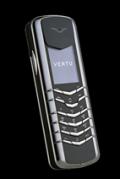E-paper is an emerging display technology that mimics the age-old process of printing ink on sheets made from wood fiber. Unlike other electronic display technologies, such as picture tubes or liquid-crystal and plasma monitors, e-paper does not emit light. It reflects it, just like the traditional printed page.
But unlike its pulp-based predecessors, an e-page is not printed once and then discarded or recycled. It is refreshed to display text or images.
With the push of a button during a demonstration, the Sony Reader PRS-500 switched from the title page of "The Da Vinci Code" to Page 1 of the book.
E-paper displays text and images by controlling millions of microcapsules printed on a sheet of plastic. Each capsule is filled with clear liquid, positively charged white particles and negatively charged black particles. When a negative charge is applied to the top of a capsule, the white particles move to the top, creating a white pixel on the display. A positive charge creates a black pixel.
While the electronic version has some of the qualities of paper, there are still differences. Unlike real paper, this first major U.S. e-paper product is not flexible. Sony encases the e-paper in a hard plastic shell. And its pixels can display only black and white.
Researchers are working on both areas. Some have produced flexible versions in the lab. Others have demonstrated color e-paper.
And Seiko has developed a prototype of an e-paper wristwatch.
Sony's Reader uses e-paper in a paperback-sized device that weighs less than 9 ounces and allows users to carry the text of up to 80 books.
When it goes on the market this spring, it will be the only such device available in the United States, said Ray Ishii, a senior manager in the San Diego firm's information technology division. Sony launched the device in Japan.
The Sony Reader showcases several of the strengths of e-paper. Unlike an LCD screen, e-paper draws power only when a page is turned. Sony says the Reader will display 7,500 pages on a single battery charge.
Previous attempts to sell e-books have failed in part because most people prefer reading printed paper to reading an LCD screen.
However, it remains to be seen whether Sony has solved all the shortcomings of previous e-books, Shim said.
"If the Sony Reader is successful, you can expect to see other manufacturers follow with other devices. It could open a whole new market."
Sony says it has high hopes for the paperlike experience of its new product. "They're easy for your eyes, and you can read from any angle and also in sunlight," Ishii said.
He said those most likely to use the new reader are frequent fliers, mass transit commuters and techies. The reader's ability to download documents from personal computers and the Web is expected to make it popular with lawyers and medical professionals.
The device has a feature that may make it popular with aging baby boomers. Fonts can be enlarged with the touch of a button, so the bifocals can stay in the pocket or purse.
The Reader will likely be priced between $299 and $399, Sony spokesman Greg Belloni said. The company hopes to sell 1 million of the devices within four to five years.
Sony will offer books for the device on a new Web site called Sony Connects, which will also offer music selections, he said. Books, including new releases, will cost an average of $9.95. The Web site will have 10,000 titles to choose from, Belloni said.
The Sony Reader makes an interesting launch point for the new display technology, said Lawrence Gasman, analyst with Virginia-based research firm NanoMarkets.
"E-paper goes a lot farther than an e-book," Gasman said. "The objective is to make it as paperlike as possible. Like a lot of people, I like to roll up a magazine I'm reading and put it in my pocket when I go from room to room. That's the objective with e-paper, to make it flexible enough to roll up and put in your pocket. It has lot of potential, but it's still early in its evolution."
© Copley News Service




